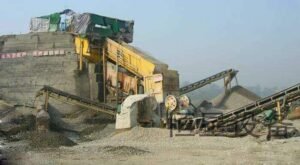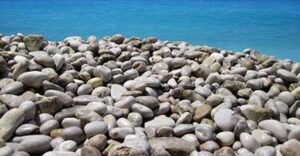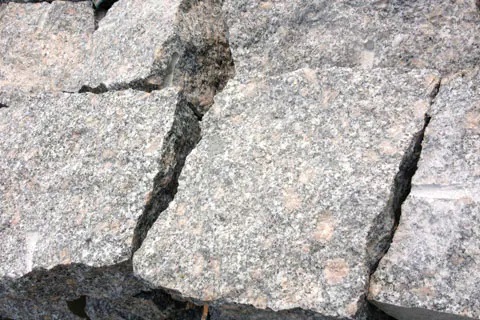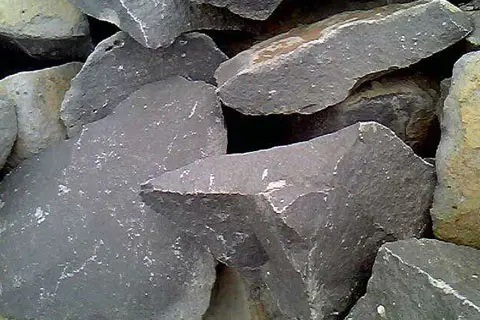33 Tips About Artificial Sand You Need To Know
1. What is Artificial Sand
Artificial sand refers to sand processed by VSI sand making machine and other auxiliary equipment, which can be processed into sand of different specs and sizes according to different process requirements.
2. Equipments for Artificial Sand
Artificial sand production line usually needs sand making machine, vibrating feeder, jaw crusher, cone crusher, impact crusher, vibrating screen, belt conveyor, sand washing machine and other equipment, which can be combined according to different process requirements and various types of equipments to meet different process requirements of customers.

3. Artificial Sand Advantages
(1). Stable Materials
The raw materials of artificial sand are sufficient. Urban construction waste (construction garbage), crushed stone tailings, byproducts, stone chips, stone slag, mine tailings, etc. can be used as raw materials of artificial sand.
(2). Lower Price
Compared with river sand, artificial sand is about $10 cheaper per ton. In addition, the profit of artificial sand is quite considerable. Based on the scale of 2000 tons / day and the current market price, it is estimated that the monthly gross profit is more than 1 million.
(3). Environmental Protection
Traditional artificial sand production does bring dust pollution and other environmental problems, but with the continuous improvement of sand production process, now we adopts a totally closed structure, so the dust does not overflow. In the dry production process of artificial sand, there is no need for water washing, no sewage, sludge, dust and other problems.
(4). Adhesion and Service Life
When artificial sand is used for cement and other structural bonding, it often has better adhesion, more compression resistance and longer service life.

4. Dry Production Process Advantages
- Moisture content of artificial sand is low, generally lower than 2%. Commercial mixed and dry mixed mortar can be used directly.
- Stone powder content in the finished sand can be adjusted and controlled, and the centralized recovery can be used comprehensively to reduce dust emission.
- Little or no water in the production process, saving water resources and protecting the environment.
- It is easy to centralize operation and realize automatic management.
- It is not affected by dry and cold seasons.
5. Why Wet Process Become less
- Large amount of water is consumed, and the water consumption of 1t sandstone is 2-3.5m³.
- Due to the high content of water, the product must be dehydrated.
- Sand fineness modulus of the product is coarse, and the sand output is low.
- Large amount of mud powder and sewage is produced, which pollutes the environment, and the stone powder is not easy to recover.
- Many types of infrastructure and equipment investment, the production cost of artificial sand is high.
- It can’t be produced normally in dry and rainless area or freezing season.
6. Semi Dry Sand Production Advanteges
Compared with the wet process, the biggest feature of the semi dry process is to wash away the mud and stone powder on the surface of the raw material. Part or all of the finished sand will not be washed with water, the loss of stone powder in the finished sand is less, and the water content is lower. However, more water resources are needed for this sand production process, and the sewage treatment device still needs to be equipped. Its investment is less than that of the wet method and more than that of the dry method.
7. What is MB Value of Artificial Sand
It is used to determine whether the content of particles <0.075mm in artificial sand is mainly soil or stone powder with the same chemical composition as the processed parent rock. Artificial sand requires MB ≤ 1.4 and should be controlled below 1.0.
8. Why Finished sand Be Humidified and Mixed
In the dry process of artificial sand production, the humidification and mixing of the finished artificial sand can make the water content of artificial sand reach saturation, which is conducive to the control of the water volume of concrete mixing, and can reduce the segregation and dust during transportation.
9. Why Fineness Modulus is Not Stable
In the production process, the feeding lithology, moisture content and grading are easy to change, the screening process will also have problems such as hole plugging, damage, etc., the efficiency and parameters of crushing and dedusting equipment are also unstable, which will easily lead to the instability of fineness modulus of artificial sand.
10. Can Waste Concrete and Masonry Be Used
Artificial sand is produced by sorting, cleaning, crushing and screening of waste concrete, masonry and industrial waste residue. However, they are mainly used to produce recycled coarse aggregate currently.
11. What is The Basis for Selecting Process

(1). The area where the production line is located, the water resources, the cleanliness of raw materials, and the specific requirements for the content and fineness modulus of aggregate and artificial sand powder. If allows, the dry production process is preferred, followed by the semi dry production process, and finally the wet production process.
(2). Equipment investments, floor area, production management, stone processing cost.
12. Test and Sampling of Artificial Sand
(1). When sampling on the material pile, the sampling parts shall be evenly distributed.
(2). Take approximately the same amount of samples from the belt conveyor discharge.
(3). When sampling from trains, automobiles and ships, samples should be taken from different parts and depths.
13. Stone Powder Content Detection
There are 2 methods for the stone powder content detection of artificial sand: water washing method and dry screening method. The representative is ASTM C136 or AASHTOT27, which is suitable for dry screening, ASTM C117 or AASHTOT11, which is suitable for water screening.

14. Stone Powder Separation Method
At present, the main methods to remove the surplus stone powder from artificial sand are hydraulic classification, mechanical screening and wind classification.
15. How To Adjust The Gradation
The particle grading of artificial sand can be realized by adjusting the feed grading, feed amount, crusher speed, screen size and so on.
16. Factors Affecting Shapes of Artificial Sand
- Lithology of source rock.
- Types of crushing equipment, impact crusher has good forming effect.
- Types of screening equipment, vibrating screens with square hole achieve better particle shape.
17. Why More Breaking and less Grinding
Because the energy utilization rate of crushing is higher than that of grinding, more crushing and less grinding are beneficial to energy conservation.
18. What is “Stone-Crash-Stone” and “Stone-Crash-Iron”
“Stone-Crash-Stone” impact crusher is suitable for medium hard abrasive materials, such as basalt. The grain shape of finished product is better and the powder content is slightly more.
“Stone-Crash-Iron” impact crusher is suitable for medium hard materials with small abrasiveness, such as limestone, etc. The crushing efficiency is high, the wear of the surrounding guard board is fast, and the grain shape of the finished product is slightly poor.
19. Why VSI Sand Maker Adopts Double Motors
- Double motors ensure the balance of main shaft.
- Ensure the speed and improve the power
20. Current Deviation of Double Motor
In the double driver equipment, the current of one motor is lower than that of the other is called inert reaction, and the deviation shall not >10%; generally, it is solved by adjusting the tension of the drive belt.
21. Why Balance Correction of Impeller Rotor
If the impeller rotors are not properly balanced, the centrifugal force generated during operation will cause abnormal vibration, rotor wear, excessive noise and other problems.
22. Balance Adjustment Steps
- Clean the sand and stone, old wear parts and sundries on the rotor and accessories.
- Re-install the wear parts and rotor
- Determine the unbalanced weight and position.
- Recheck the balanced rotor balance.
23. Factors Affecting Impact Sand Maker Efficiency
- Characteristics of raw materials.
- Water content of crushed materials.
- Feeding quantity.
- Speed of impeller.
24. Why Impact Crusher Vibrate More When Starts
Because the rotor does not form a uniform lining at the beginning of operation and is unbalanced, it is necessary to feed some fine materials at the beginning. If the coarse material is fed at the beginning, it will continue to vibrate for several hours until a uniform lining is formed on the rotor.
25. Types of Screening Equipments
The screening equipments mainly used in the production of artificial sand are: bar screen, trommel screen, circular vibrating screen, linear vibrating screen, high-frequency screen and probability screen, of which bar screen is mainly used in the soil removal process.
26. Factors Cause Screens Blocking
- Sand aggregates contains a large number of particles at the critical separation point size.
- large proportion of flaky materials
- High mud content.
- High water content.
27. Factors Cause Screens Damage Easily
- Screen quality or material is unqualified.
- The tension of the screen is not enough, and it is usually broken or damaged along the edge of the screen.
- The vibration amplitude is too small, resulting in the accumulation of sand particles on the screen and accelerating the damage of the screen.
28. Relationship Between Fineness Modulus and Screen Size
At present, the general requirement of fineness modulus of artificial sand is 2.6-3.0, and the screen size is generally recommended to be 3.0mm or 3.5mm. If the content of stone powder is large, 2.8mm sieve can be used. As far as possible, the type of screen mesh should be square mesh, which is very beneficial to the particle shape control.
29. What is Wear parts of Impact Sand Maker
Standard Wearing Parts: cylindrical roller bearing, deep groove ball bearing, thrust ball bearing, expansion sleeve, conveyor belt, oil seal, O-ring.
Non-standard Wearing Parts: upper shaft sleeve, lower shaft sleeve, damping rubber, wheel guard ring, upper / lower runner plate, impact block, separating cone, wear plate, throwing head, blanking lining ring, feeding pipe, upper / lower striking guard plate, hopper lining ring, separating plate, scattering plate and surrounding guard plate.
30. Why Wheel Sand Washer for Wet Production
The structure of wheel sand washer is simple, the faults rate is lower than that of spiral sand washer. In the washing process, the loss of fine sand and stone powder is less, the artificial sand is well graded, the fineness modulus is easy to control, and the quality is relatively stable.
31. Apparent Density and Bulk Density
The apparent density of artificial sand shall not be less than 2500kg/m³; the bulk density shall not be less than 1400kg/m³; the void ratio shall not be greater than 44%.
32. Types of Rocks In Nature
(1). Magmatic Rock (Igneous Rock), which is formed by magma eruption and is generally hard and uniform in texture.
(2). Sedimentary Rock (Hydrogenic Rock), which is formed by a series of geological processes, such as weathering, transportation, deposition and diagenesis. It is generally characterized by layered distribution structure and similar properties in the same period.
(3). Metamorphic Rock, which is formed on the basis of existing rocks and after metamorphism and mixing.

33. What Rocks Used for Artificial Sand
The raw materials of artificial sand (aggregate) are usually granite, basalt, pebble, cobble, andesite, rhyolite, diabase, diorite, sandstone, limestone and other varieties. The artificial sand can be distinguished according to the types of rocks, and there are also differences in strength and use.



